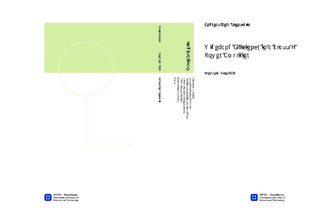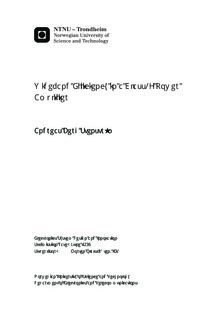| dc.contributor.advisor | Olavsbråten, Morten | nb_NO |
| dc.contributor.author | Stenstrøm, Andreas Berg | nb_NO |
| dc.date.accessioned | 2014-12-19T13:49:58Z | |
| dc.date.accessioned | 2015-12-22T11:50:37Z | |
| dc.date.available | 2014-12-19T13:49:58Z | |
| dc.date.available | 2015-12-22T11:50:37Z | |
| dc.date.created | 2014-09-12 | nb_NO |
| dc.date.issued | 2014 | nb_NO |
| dc.identifier | 746544 | nb_NO |
| dc.identifier.uri | http://hdl.handle.net/11250/2371070 | |
| dc.description.abstract | In this thesis, the design of a class-F/inverse class-F amplifier with high efficiency in a 1.2 GHz bandwidth and center frequency at 2.4 GHz is presented. The harmonic tuning is done by using a CAD load pull test bench in Agilent ADS. The optimal impedances at f0, and at the harmonics 2f0 and 3f0, which gives the best performance is found by using the test bench. These impedances are realized in matching networks with passive components, microstrip lines and open circuit stubs. Two identical amplifiers were manufactured and characterized with small signal, large signal and two tone measurements. The design is based around a Cree 10 W GaN HEMT transistor and printed on a FR-4 substrate.Simulations using the lossless load pull test bench resulted in a drain efficiency higher than 80% and PAE higher than 75% through the bandwidth while the output power were larger than 10 W with a maximum of 11.9 W.This is the optimal performance of the amplifier and set the impedances to obtain in the matching networks. The final design with realized matching networks resulted in a decrease in efficiency of 5-15% and an increase in output power by about 0.5 dBm while operating at the 1 dB compression point. The decreased efficiency is due to imperfect matching and loss in components and microstrip lines. In the simulations, the amplifier achieved a 3 dB bandwidth of 1.8 GHz in the small signal gain.The measurements concluded that the most optimal bandwidth of operation is from 1.6 - 2.8 GHz, a 200 MHz shift from the bandwidth given in the assignment. The measurements results show a drain efficiency from 55-66% in the bandwidth and a PAE higher than 50%, delivering an output power of 14.2 W operating at 1 dB compression. The measured 3 dB bandwidth of the amplifier were 2.57 GHz.The results show great promise as power amplifiers covering large frequency bands rarely has good efficiency throughout the whole bandwidth. Possible applications include cognitive radio transceivers, radios which use frequency hopping or as a buffer amplifier for lab purposes. | nb_NO |
| dc.language | eng | nb_NO |
| dc.publisher | Institutt for elektronikk og telekommunikasjon | nb_NO |
| dc.title | Wideband Efficiency in a Class-F Power Amplifier | nb_NO |
| dc.type | Master thesis | nb_NO |
| dc.source.pagenumber | 81 | nb_NO |
| dc.contributor.department | Norges teknisk-naturvitenskapelige universitet, Fakultet for informasjonsteknologi, matematikk og elektroteknikk, Institutt for elektronikk og telekommunikasjon | nb_NO |

